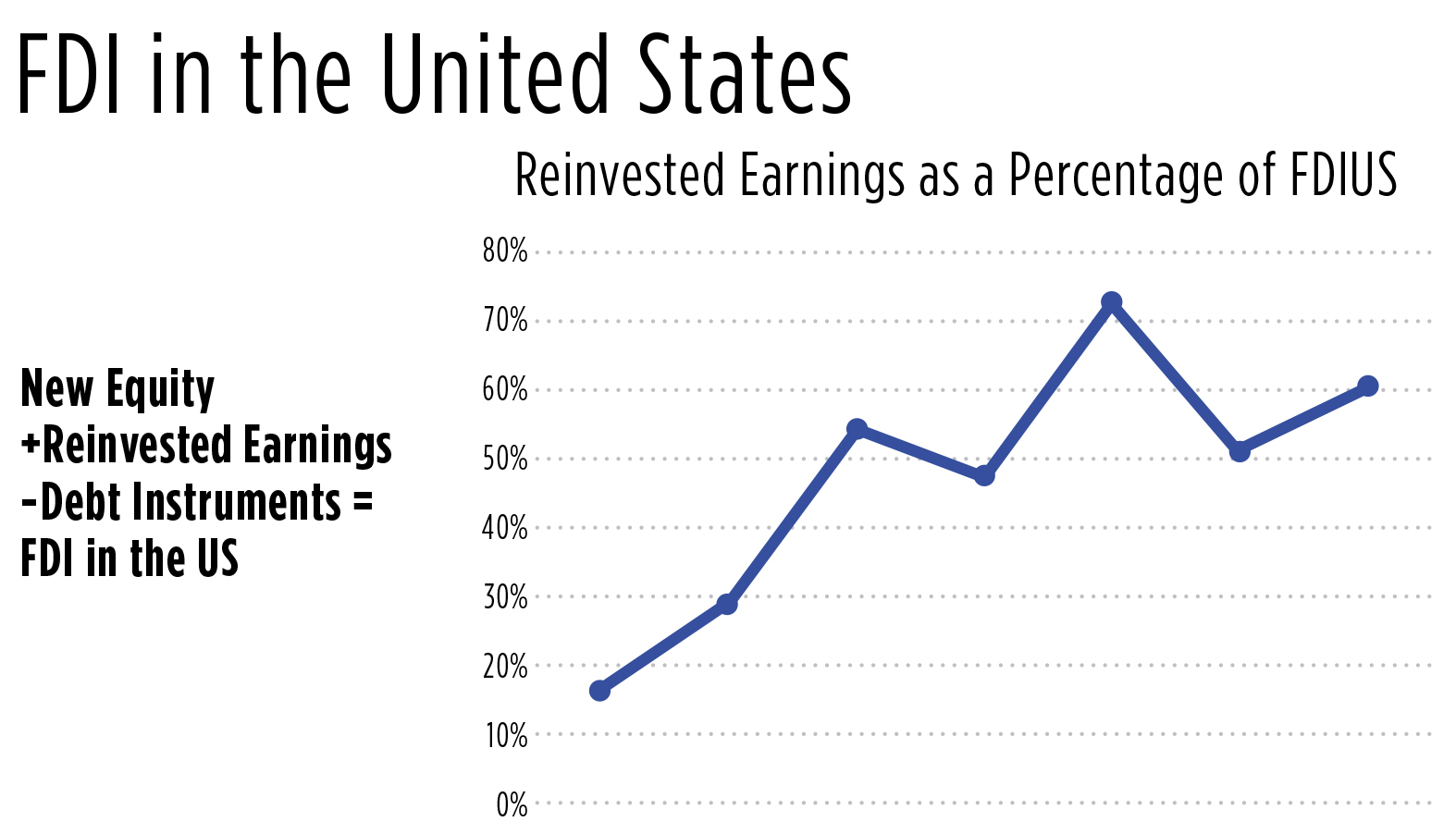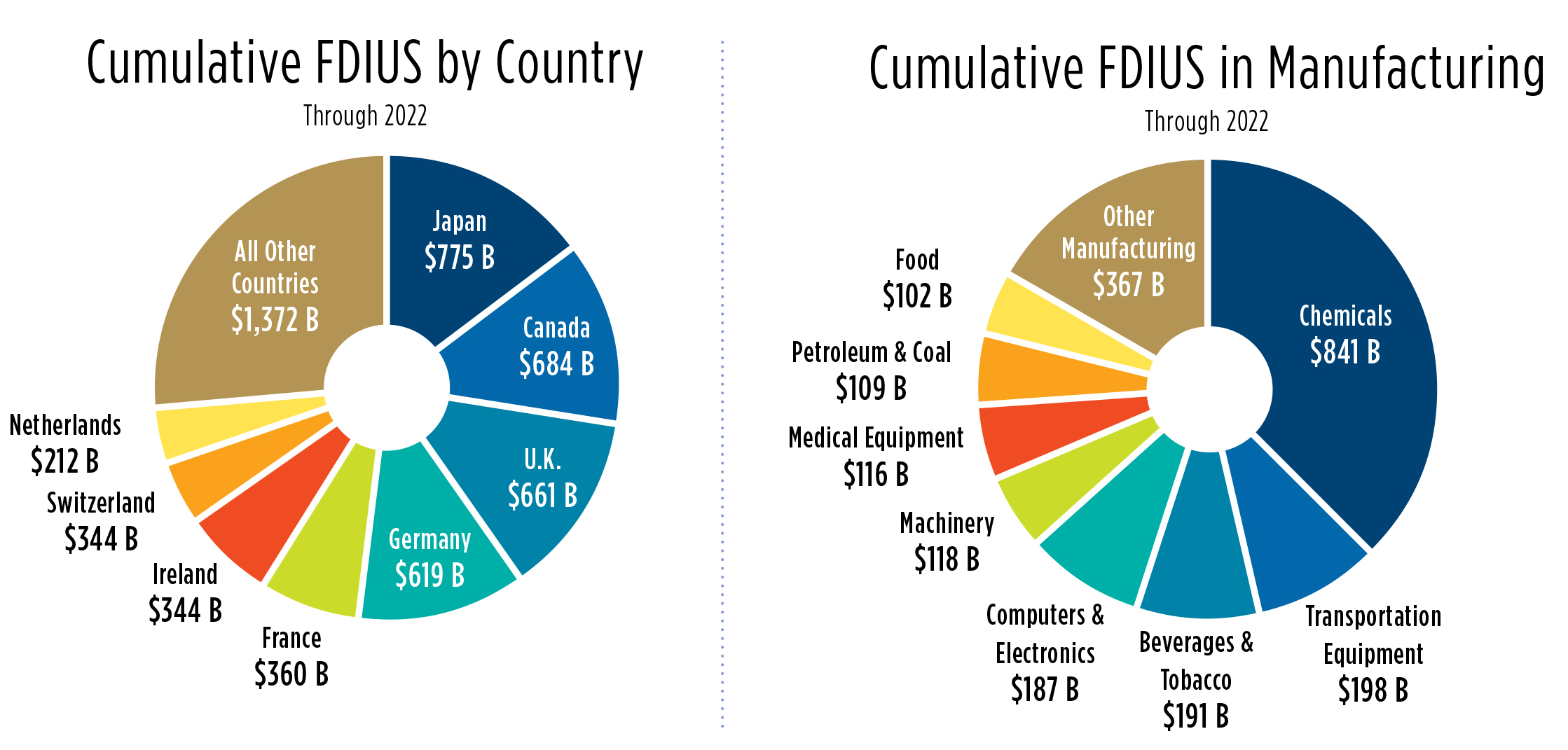July 2023 data from the U.S. Bureau of Economic Analysis show that foreign direct investment (FDI) into the United States grew $216.8 billion at year-end 2022 to $5.25 trillion. The year-end 2021 figure was $5.04 trillion. The bulk of that investment came from just five countries, with Japan weighing in at $712 billion followed by $663.4 billion from the UK, $617.1 billion from the Netherlands, $589.3 billion from Canada and $431.4 billion from Germany. The manufacturing sector was the largest recipient of FDI, capturing 42.4% of the total. Runners-up were finance and insurance at 10.6% and wholesale trade at 9.7%.
If there is an FDI figure that has shrunk in recent years, it’s Chinese investment into the U.S. According to the Global Business Alliance (GBA), which since 1990 has been tracking FDI flows into the U.S., Chinese investment is just $45 billion, a drop of 29% in the past five years.
In its September 2023 report, “The Power of Global Investment in America,” GBA attributes that drop to “the expanded effort of the Committee on Foreign Investment in the United States (CFIUS) to safeguard our national security from nefarious investment.” In 2016, the Committee broadened its scrutiny of foreign investment deals, and in 2018 the Foreign Investment Risk Review Modernization Act became law, giving CFIUS the power to scrutinize more investments, especially those in U.S. technology sectors.

 GBA’s report addresses an us-versus-them sentiment on the part of some policymakers where foreign investment is deemed suspicious due to concerns about Chinese investment in the U.S. tech sector.
GBA’s report addresses an us-versus-them sentiment on the part of some policymakers where foreign investment is deemed suspicious due to concerns about Chinese investment in the U.S. tech sector.
Jonathan Samford, executive vice president of the Global Business Alliance, explains: “It comes down to a false dichotomy based on misperceptions,” he tells Site Selection. “The reality is that 75% of all foreign direct investment in the U.S. comes from longtime friends and allies of the U.S. Chinese investment has been on the downswing for years and amounts to less than 1% of all global investment in the U.S. Yet, China seems to consume 75% of U.S. policy focus, and that often creates unintended consequences. The great thing is we can harness the best of what the world has to offer by welcoming globally successful companies to invest and create jobs here while also safeguarding our national security.”
What’s Driving FDI Growth?
GBA represents almost 200 international companies with operations in the United States and is a leading advocate for them and for their contribution to the U.S. economy. It notes that nearly 8 million Americans work for internationally owned companies, and they earn nearly $87,000 on average, which is 7% more than the national average. FDI employment from 2016 to 2021 grew by 11%, according to GBA, whereas private-sector employment overall grew just 2%. Of the 7.9 million FDI jobs, 2.8 million, or 23%, are in the manufacturing sector. What’s more, foreign investing companies spend $78 billion on R&D, or 13% of all R&D invested in the U.S.
“While the total amount of global investment in the United States continues to grow,” says Samford, “there is an interesting trend developing in what’s driving that growth. Global investment is largely comprised of new equity from abroad and reinvested earnings from firms currently operating here. Today, reinvested earnings are a much larger component of FDI than it has been historically. In 2016, reinvested earnings represented just 16% of the FDI that flowed to the United States. Last year, it was a whopping 61%.
“Here is why that matters,” Samford explains. “International companies that are already operating here are confident about the U.S. market and reinvesting profits back into their U.S. operations. But would-be investors are sitting on the sidelines. Policymakers can no longer take global investment for granted, and economic developers who only focus on attracting new equity from abroad are missing out on tremendous opportunities by not cultivating the companies that have already decided to call their communities home.”

